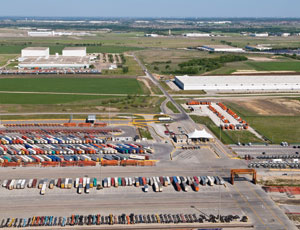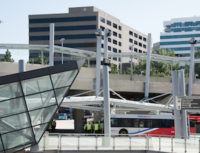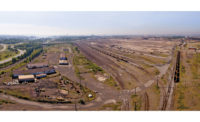For the third consecutive year, Fort Worth-based Alliance Foreign-Trade Zone No. 196 ranks as the top “General Purpose Foreign-Trade Zone” in the United States in terms of value of foreign goods admitted, according to the Annual Report of the Foreign-Trade Zone Board to the U.S. Congress.

“Companies are looking for ways to implement efficiencies without spending a lot of capital,” Hillwood’s vice president Steve Boecking tells Texas Construction. “That is one reason the FTZ is attractive. It doesn’t cost much to get in and the returns are 200% to 1,000% RLI. The paybacks are 90 days to six months.” He adds: “Great ROIs, those are things CFOs will say ‘you can spend that money.’”
Utilization of Foreign-Trade Zone No. 196 should continue to grow with the activation of ATC Logistics & Electronics in 2009, Boecking says. The company leases close to a million sq ft and employs 2,600 workers at Alliance.
Other major users include Hyundai, Trans-Trade, LEGO and Motorola.
Alliance ranked as top Texas general purpose FTZ with $5.4 billion in foreign goods admitted in the U.S. Other Texas regions finishing in the top 25 include: Harris County, third with $3.8 billion; El Paso, fifth with $1.2 billion; Ellis County, ninth with $995 million; Brownsville, 10th with $987 million, Dallas, 15th with $679 million; McAllen 19th with $456 million; and DFW Airport, 23rd with $379 million.
Foreign-trade zones are secure areas under the supervision of U.S. Customs and Border Protection. They are considered outside the customs territory of the U.S. for purposes of duty payment. Under zone procedures, the usual formal customs entry procedure and payment of duties are not required on foreign merchandise unless and until it enters U.S. Customs territory for domestic consumption, in which case the importer normally has a choice of paying duties either on the original foreign materials or the finished product. Such sites and activities remain under the jurisdiction of federal, state and local governments and agencies.
Boecking says another plus for Alliance’s FTZ is the roll-out of its heavy-load container area in March 2009, adjacent to the BNSF intermodal facility. New private roads between the heavy-load container area and BNSF facility allow heavier loads than public roads, Boecking says. Companies that put more product into one container can save about 20% to 30% on transportation costs, he adds. Inbound goods are then broken down into smaller loads.
“It is a great example of a new idea in logistics,” he says. “Heavy-load practices are done routinely at seaports. The Alliance facility may be the only one at an inland port in the U.S.”




Post a comment to this article
Report Abusive Comment